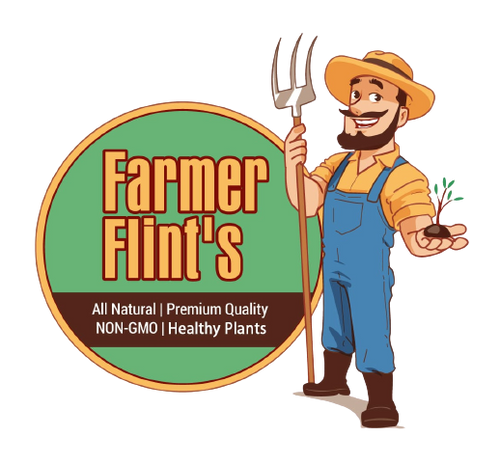Introduction: Why Vermicomposting Matters
Organic waste management has taken center stage in modern gardening and sustainable living practices. Among the various composting techniques, vermicomposting—the use of worms to break down organic material—is one of the most efficient, natural, and low-maintenance systems available. Whether you're living in a small apartment or managing a large backyard garden, vermicomposting offers a compact and odor-free solution to turn kitchen scraps into nutrient-rich compost.
In this comprehensive beginner’s guide to vermicomposting with worms, you’ll learn what it is, how it works, what materials are needed, which worms to use, how to care for them, common pitfalls to avoid, and how to harvest and use your vermicompost.
1. What is Vermicomposting?
Vermicomposting is the process of using earthworms to decompose organic waste into a nutrient-rich material known as worm castings or vermicast. These castings are a powerful natural fertilizer that improves soil structure, aeration, and water retention while increasing microbial activity and nutrient availability.
The idea behind vermicomposting is simple: feed the worms organic matter like fruit peels, vegetable scraps, coffee grounds, and shredded paper, and in return, they produce some of the best compost nature can provide.
2. Benefits of Vermicomposting
a. Reduces Kitchen Waste
One of the biggest advantages is the reduction of household waste. Instead of throwing food scraps in the trash, you can feed them to your worms.
b. Produces High-Quality Compost
Worm castings are rich in essential nutrients like nitrogen, phosphorus, and potassium. Unlike chemical fertilizers, vermicompost also contains beneficial microbes that support long-term soil health.
c. Environmentally Friendly
Vermicomposting helps reduce landfill waste and methane emissions, promoting a more sustainable waste cycle.
d. Ideal for Small Spaces
A vermicomposting setup doesn't require a large backyard. Many people keep bins under their kitchen sink, in a closet, or on a balcony.
e. Educational and Therapeutic
For families, schools, and community gardens, it offers an excellent hands-on opportunity to learn about biology, recycling, and sustainability.
3. The Right Worms for the Job
Not all worms are suitable for composting. The most commonly used species is the Eisenia fetida, or red wiggler. These worms are highly efficient at decomposing organic matter and thrive in confined, moist environments.
Other Common Vermicomposting Worms:
-
Eisenia andrei – Closely related to red wigglers
-
Lumbricus rubellus – Red earthworm, sometimes used in cooler climates
-
Perionyx excavatus – Blue worm, thrives in tropical environments
Avoid using earthworms from your garden. These species tend to burrow deep into the soil and are not well-suited to the confined environment of a compost bin.
4. Setting Up Your Vermicomposting Bin
Setting up a vermicomposting system is easy and inexpensive. You can build a bin yourself or purchase one online or from a gardening store.
Materials You’ll Need:
-
A plastic or wooden bin (approximately 10–18 gallons for small-scale composting)
-
A lid (ventilated)
-
Bedding material (shredded paper, coconut coir, or aged leaves)
-
Red wigglers (start with 500–1000 worms)
-
Organic waste (vegetable scraps, fruit peels, coffee grounds, etc.)
Step-by-Step Instructions:
Step 1: Prepare the Bin
-
Drill 8–10 small holes in the bottom and sides for airflow and drainage.
-
Add a tray underneath to catch excess liquid, also known as “worm tea.”
Step 2: Add Bedding
-
Moisten the bedding until it feels like a wrung-out sponge.
-
Spread it evenly across the bottom of the bin (4–6 inches deep).
Step 3: Add the Worms
-
Place your worms on top of the bedding. They will naturally burrow down to escape the light.
Step 4: Add Food Waste
-
Begin with small amounts of food. Add a few tablespoons at first and increase as the worms settle in.
Step 5: Cover and Wait
-
Cover the bin with the lid or a piece of burlap. Place the bin in a cool, dark area.
5. What to Feed (and Not Feed) Your Worms
Yes – Good Worm Food:
-
Fruit peels (banana, apple, melon, etc.)
-
Vegetable scraps
-
Coffee grounds and filters
-
Tea bags (no staples)
-
Shredded newspaper
-
Crushed eggshells (in moderation)
No – Avoid These Items:
-
Citrus (too acidic)
-
Onions and garlic
-
Meat, dairy, and oily foods
-
Spicy foods
-
Plastics, foil, or non-organic materials
Tips:
-
Chop food into small pieces to speed up decomposition.
-
Bury food scraps in different parts of the bin to avoid attracting pests.
6. Worm Bin Maintenance
Red wigglers are low-maintenance creatures, but they thrive with a bit of care.
Temperature:
-
Optimal range is 55°F to 77°F.
-
Avoid freezing or overheating the bin.
Moisture:
-
The bin should be moist, not wet.
-
Add water if it’s too dry or add dry bedding if it’s too wet.
Aeration:
-
Gently fluff the bedding occasionally to improve oxygen flow.
Odor Control:
-
A healthy bin smells earthy, not foul.
-
Foul smells usually result from overfeeding or poor aeration.
7. Troubleshooting Common Problems
Problem: Worms Trying to Escape
-
Possible causes: Too much food, poor ventilation, or pH imbalance.
Problem: Foul Odor
-
Likely cause: Overfeeding or rotten food.
-
Fix: Remove decomposed waste and reduce feeding volume.
Problem: Fruit Flies
-
Bury food deeper and keep the lid closed.
Problem: Mold or Fungi
-
Small amounts are fine. Too much suggests overfeeding.
8. Harvesting Your Vermicompost
After 2–3 months, your bin will begin producing dark, crumbly vermicast. It’s time to harvest.
Method 1: Side-to-Side Migration
-
Push finished compost to one side.
-
Add fresh bedding and food to the other side.
-
Wait a few weeks. Worms will migrate, and you can scoop out the compost.
Method 2: Manual Separation
-
Dump the bin’s contents onto a tarp.
-
Create small mounds under bright light.
-
Worms burrow down; collect the compost from the top.
Method 3: Vertical Bins
-
If using a stacking bin system, simply remove the finished tray from the bottom.
9. Using Vermicompost in Your Garden
Vermicompost can be used in various ways:
-
As a soil amendment: Mix into potting soil or garden beds.
-
As a top dressing: Sprinkle around plants.
-
To make compost tea: Steep a handful of worm castings in a gallon of water for 24 hours. Use the liquid to water plants.
It boosts plant growth, helps prevent disease, and supports healthy microbial life in the soil.
10. Scaling Up Your Operation
Once you’ve mastered a small bin, you might want to scale up. You can create multiple bins, invest in larger stacking systems, or even build an outdoor worm farm.
Ideas for Expansion:
-
Create a multi-bin rotation system.
-
Sell worm castings or “worm tea” at local farmer’s markets.
-
Donate vermicompost to schools or community gardens.
Conclusion: A Sustainable Practice for Everyone
Vermicomposting is a simple, powerful way to transform food waste into something incredibly valuable. Whether you're a backyard gardener, urban apartment dweller, or sustainability enthusiast, this practice offers an accessible entry into the world of ecological living.
Red wigglers do much more than eat food scraps. They help close the loop in the natural cycle of life, creating fertile soil from what we once called waste. For anyone looking to nurture their garden while reducing their ecological footprint, vermicomposting with worms is a solution that's easy to start, satisfying to maintain, and rewarding in the long run.







